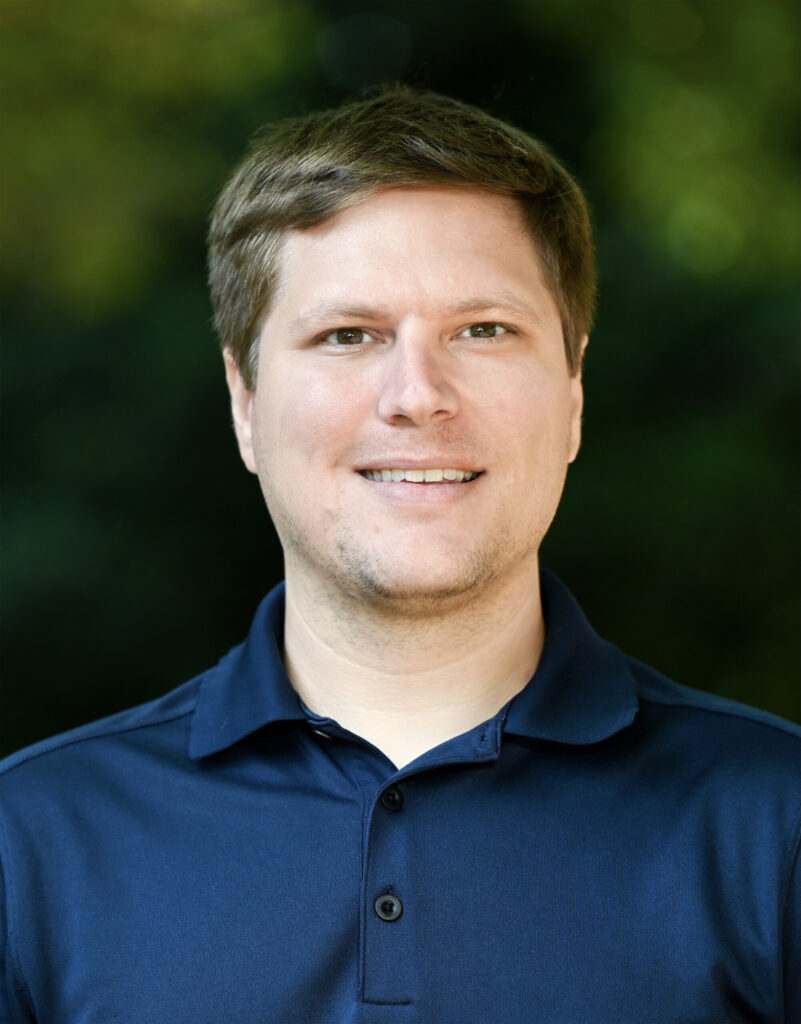
Austin Harris found his way from West Tennessee to UTC more than a decade ago, drawn by its peerless natural beauty and rapidly expanding technological capabilities. An early interest in computer science and software engineering led to a career with the Center for Urban Informatics and Progress, managing the smart corridor along East ML King Boulevard and using the data it generates to make Chattanooga safer, more efficient, and more livable. As the smart corridor expands to become a fuller smart network, Austin and his team will be able to harness one of the world’s largest living testbeds of vehicular and pedestrian data and use it to drive even more progress in real time.
What is your title at the Center for Urban Informatics and Progress – and what do you actually do?
I’m the Director of Operations and Chief Engineer for the UTC Research Institute and CUIP. My primary role is maintaining the testbed and planning for new technologies: thinking about new technologies and use cases that we can develop. I work with the city government very closely, defining our plans for the future. The City is a core collaborator, helping us with installations and so forth. Right now, I’m building a transportation management center, which is basically a mass of all TVs, for monitoring, you know, again, working on specific research projects. We make our data available to other researchers; data is scarce, especially real world data. Basically, anything we need to figure out, I’ll dive in and see how we can get it done.
The smart corridor is one project of the Center for Urban Informatics and Progress. Say more about what the center is and does.
The Center for Urban Informatics and Progress is a research center and we are very much focused on “smart cities.” There are a lot of things that fall under smart cities, from sensing to artificial intelligence, but at the end of the day ,all these things come together around the goal of developing a safer and more accessible city. We’re about improving the lives of the people that live in Chattanooga, Tennessee – that’s the ultimate goal of our research.
How did you come to this work?
I moved to Chattanooga to go to UTC in 2010. Up to that point, I was from the southern side of Jackson, Tennessee – a town with a population of about 180 people. [laughs] I was also fascinated by computers and figuring out what I could do with them on my own; in some ways, the work I do now is still an extension of that.
I worked in research under Mina [Sartipi, director of CUIP] as a student for five years and my six years at UTC. I started working as an Enterprise Solutions Architect, so I was traveling a lot – working with Fortune 500 companies, designing data systems. This was in late 2018. The CUIP was just being established at that time, and the testbed was just being talked about. I came on board initially, very much focused on developing the data systems that help us collect all the data across the testbed – because it is a lot of data.

Why is Chattanooga the right place for someone who’s interested in the kind of work you’re doing?
Personally speaking, my wife and I just love the city. There’s so much to do: you’re eight minutes from downtown to an awesome hike, you’ve got access to the river. The environment in general is just so good and the technological progress it continues to make is just remarkable.
Someone coming to UTC that wants to work in research, whether that be getting a master’s degree, a Ph.D, or a postdoc, or coming in as a faculty, will have access to one one of the largest test beds in the world that features all of the technologies that we’re going to be deploying.
What are you excited about in the year ahead?
We’re actually in the middle of some expansion of the test bed right now, out to Highway 27. Part of that is updating some of the original technologies along East ML King, so that’s in the works right now. We will have dedicated polls going up alongside Highway 27, with very similar technologies that we see on MLK.
There’s significant value for the students that come through CUIP, because it’s applied research. There is significant value in theoretical research, but we like to see that research come full circle, from design, development, planning, and so on. Maybe we learn some information about where pedestrians are crossing the road, for instance, but there’s no crosswalk there, so we keep seeing safety incidents – and so then the city puts in a designated crosswalk. That’s an example of this work coming full circle: where we actually get to see the work and the results of that work, and its effects on the people that live here.